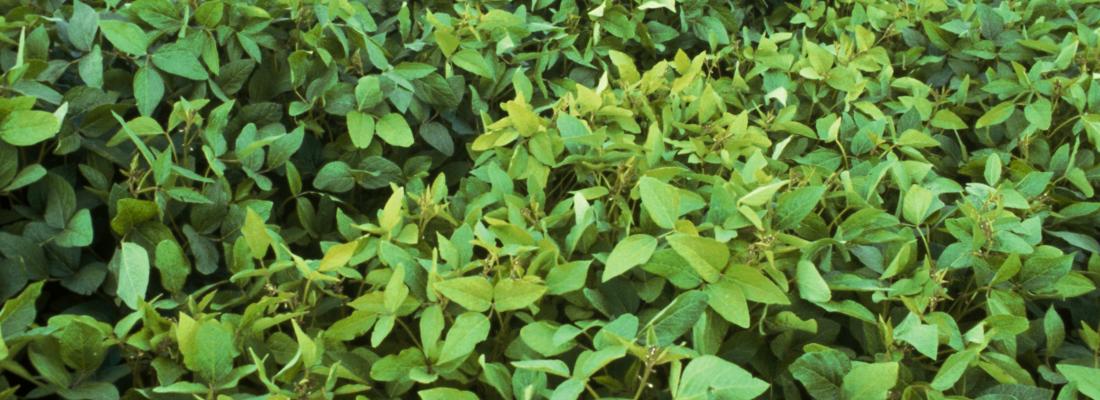Agroecology 2 min
The highly complex genome of the devastating soybean disease Phakopsora pachyrhizi unraveled
A unique international consortium representing 12 public and private entities announces the completion of the sequencing and genome assembly of three isolates of P. pachyrhizi, a mandatory biotrophic fungus that causes Asian soybean rust and leads to losses of up to 90% if not checked.
Published on 30 September 2019

Asian soybean rust caused by the obligate biotrophic fungus Phakopsora pachyrhizi is a critical challenge for soybean growers, especially in Latin America where 192 million metric tons are produced (USDA, 2019), representing a gross production value of U.S. $ 61.4 billion per year (CONAB, 2019).
This devastating disease can lead to yield losses of up to 90% if not controlled. Management costs for farmers exceed U.S. $2 billion per season in Brazil alone. The pathogen is highly adaptive, but the number of practical solutions for controlling the disease is limited. To accelerate innovation, develop new traits and discover novel modes of action against P. pachyrhizi, a high quality genome was required. This was not achieved so far because of the exceptional size and complexity of this pathogen´s genome which was estimated to be around 1 Gbp.
To tackle this crucial challenge, a unique international consortium representing 12 public and private entities was established. This joint effort comprises the 2Blades foundation, Bayer, the Brazilian Company of Agricultural Research (Embrapa), the German University of Hohenheim, l’Institut National de la Recherche Agronomique (INRA) and Université de Lorraine, the U.S. Department of Energy (DOE) Joint Genome Institute (JGI, USA), KeyGene, the German University of RWTH Aachen, The Sainsbury Laboratory, Syngenta and the Federal University of Viçosa (Brazil).
This consortium today announces the completion of the sequencing and assembly of not just the genome of one, but three P. pachyrhizi isolates. A panel of high-end, next‐generation sequencing technologies were used providing either small (Illumina) or long reads (PacBio). For one isolate, the consortium benefited from the JGI's expertise through their Community Science Program. For another isolate, KeyGene made their latest long-read sequencing platform, Promethion from Oxford Nanopore, available pro bono supporting the improved assembly of one of the genomes. This resulted in a 10-fold reduction of scaffolds for this isolate and a chromosome level assembly. For a third isolate, remarkable bioinformatics inputs were supported by Syngenta. All these new technologies have been key to the success of the initiative to tackle the complex nature of the genome. Additionally, the JGI is providing the platform to host and make publicly available these genomic resources to the scientific community. All available data can be found at https://mycocosm.jgi.doe.gov/Phapa1.
The assembled P. pachyrhizi genome encompasses 1.057 Gb, representing one of the biggest genomes amongst fungi and indeed plant pathogens in general. The sequencing revealed that the genome is extremely rich in sequence repeats and non-coding DNA, roughly making up about 90% of all sequences. The genome also harbors several families of transposons, elements that may enable the pathogen to rapidly adapt to new environments. Despite the large genome size of P. pachyrhizi, the number of genes in its genome is about 20,700 which is similar to the number found in other rust fungi.
To better understand which parts of the genome are active at various stages of the pathogens’ life cycle, the consortium has also generated a transcriptome atlas of all fungal structures and infection stages of the pathogen. This knowledge will contribute to improve annotation and extent the knowledge of the molecular mechanisms exploited by P. pachyrhizi during soybean infection.
With the complete sequencing of the P. pachyrhizi genome, substantiated by the analysis of gene expression and resequencing of isolates, the consortium hopes to leverage this information with the scientific community to decipher the biology of the fungus and understand, on the molecular level, its complex interaction with its host.
“The completion of the sequencing and genome assembly in an open innovation way is a great news for the whole scientific community. It will broaden the understanding of P. pachyrhizi’s adaptability, evolution, and genetic diversity thus paving the way to knowledge-based strategies for Asian soybean rust control”, said the EMBRAPA Soybean researcher Francismar C. Marcelino-Guimarães.
All data is available at the link: https://mycocosm.jgi.doe.gov/Phapa1
